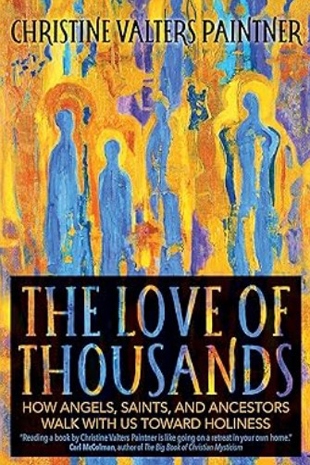Christine Valters Paintner is one of our favorite spiritual writers, winner of several of our “Spiritual Book Awards," and a member of our Living Spiritual Teachers Project.
Her latest book is wonderful. Particularly if you find yourself lonely or losing hope, her words of support and encouragement from angels, saints, mystics, and other friends along the spiritual path will buoy your spirits. This is a book of friendship that crosses the divide or, perhaps, shows how the divide is not real.
She wants to take readers on “a journey of opening our hearts to the love of all those sacred beings who dwell in spiritual form across the veil.” If you have doubts, she understands how that is natural but then offers: “Our Western minds may tell us that what we see is all there is, but the religious and mystical imagination knows a deeper truth.”
This is not to say that Valters Paintner ignores the pain and suffering in the world, but she writes: “In a world so filled with struggles, discord, and violence, I know I need as many reminders of the Love that undergirds and infuses all of life.”
This book does that, with chapters on everything from guardian angels to ancestral connections, all of which fuse us to the divine life. As usual, her use of quotation and example is brilliant. You will find many references to familiar teachers such as Mary Oliver, Alice Walker, and Barbara Holmes here. You will meet many new voices as well.
Each chapter includes practical exercises, meditations, and what she calls “creative explorations.” In one of creative exploration, the author coaches you to write your own poem in response to what you have reflected on. In another, she shows you how to make a home altar and why this might be helpful to you.
Always, she writes with personal anecdote, never with a detached omniscience. For example, in the late chapter on “Intergenerational Wounds and Our Responsibilities,” Valters Paintner offers examples of her own wounds, including fraught relationships and examples of times when she ran away from pain, as well as the effects that doing this can have on us. Part of her personal practice, in the context of learning from these experiences, is this:
“I gaze at photos of family members, looking for clues. I cherish the few photos I have where my parents, and especially my father, look joyfully at me — this new life for which he is responsible. I meditate with images of my father and me walking in the mountains. I read books about the cultural stories that have shaped my ancestors. I honor this web I am woven into.”
